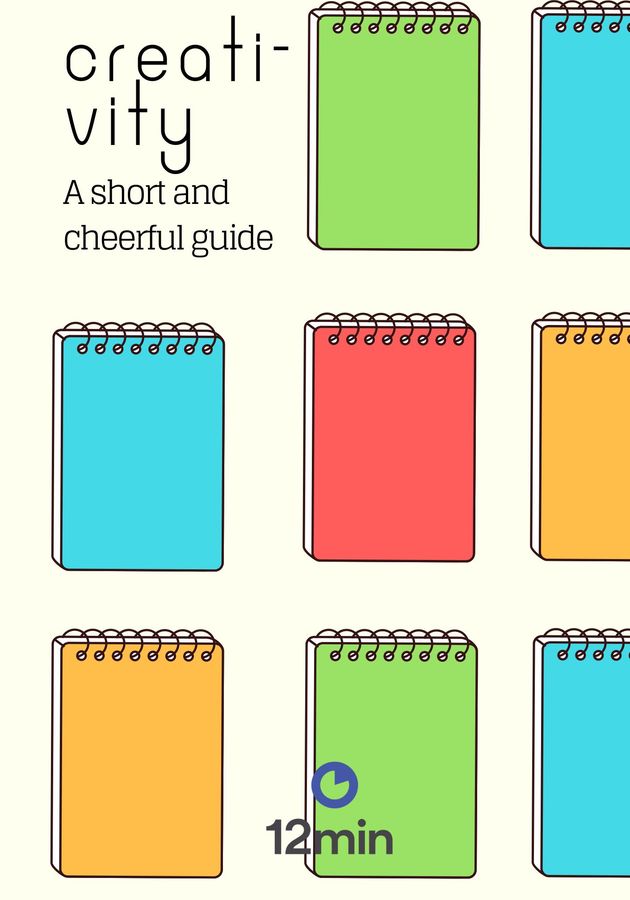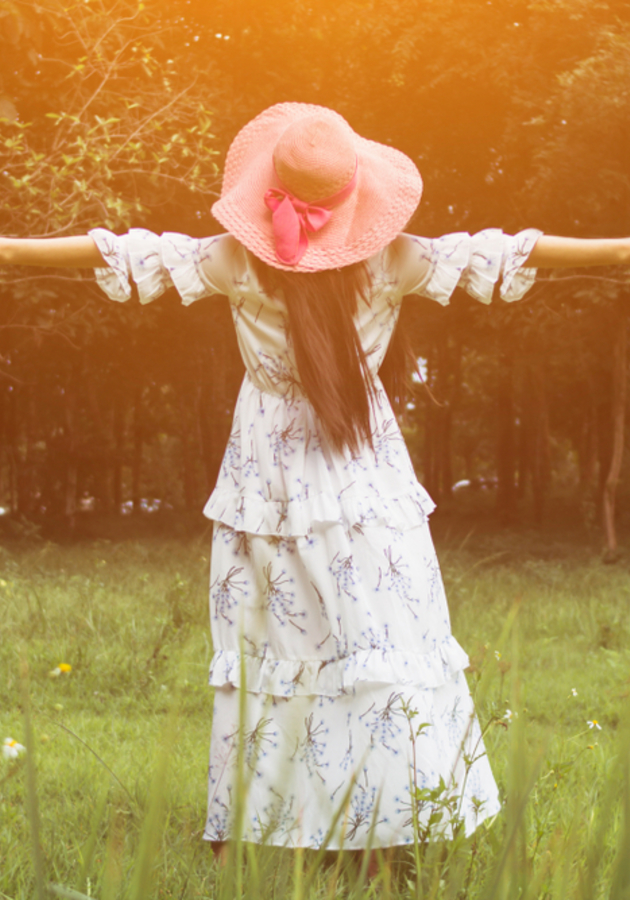Most people think that creativity is some “mysterious and rare gift,” and even more think of it as being entirely about the arts – music, poems, movies, paintings, etc. According to John Cleese, one of the comic geniuses behind “Monty Python,” neither of these two common beliefs bears any relation to reality. “Creativity can be seen in every area of life,” he writes. “And anyone can be creative.” In this short and cheerful guide, he draws on cutting-edge research and his lifelong experience as a writer to get to the bottom of the creative process. So, get ready to learn something about the nature of creativity and prepare to hear a few hints and suggestions on how to get your own creative juices flowing!
Creativity and the unconscious mind
Even though he will certainly be remembered by history as one of the greatest creative geniuses of the 20th century, as a young man, John Cleese wasn’t really into any of the fine arts. In fact, he did Science at school and then went on to study Law at Cambridge. As a result, the first time he discovered he could be creative was in his 20s. The thing happened by surprise. Pretty much on a whim, he decided to join an artistic society called the “Footlights.” He had frequented their little vaudeville shows – which were put on in a small club room just around his Cambridge lodgings – and, in time, grew to like the members. “I didn’t join the Footlights because I thought I might want to go into show business,” he explains. “I joined the club because its members were the nicest bunch of people I met at Cambridge.”
Now, to become a member of the Footlights, one first had to write something. So, Cleese was asked to come up with a couple of sketches to perform them before the fellows of the society. It was during the course of writing these sketches that Cleese realized that he could be creative. But he also realized something far more interesting – namely, that his most creative ideas had much more to do with the inner workings of his unconscious mind than with his deliberate, conscious efforts. You see, Cleese would often get stuck writing a sketch in the evening, but in the morning, almost miraculously, he’d wake up with a solution to the problem he had been wrestling with the night before. “This is how I began to discover that if I put the work in before going to bed, I often had a little creative idea overnight,” he writes.
It wasn’t long before he discovered something even stranger. Once again, it happened by accident, after Cleese lost a parody of a sermon he had cowritten with his friend Graham Chapman. Not wanting to tell Chapman about it, he decided to rewrite the whole thing from memory. After a while, Cleese found the original sketch and compared it to the “remembered version.” To his astonishment, the latter was actually an improvement! That couldn’t have been possible if some part of his mind hadn’t continued to think about the sketch after he and Graham had finished it. “It was like the tip-of-the-tongue phenomenon,” Cleese explains. “You can’t remember a name, you chase after it in your mind, and find you cannot recall it. And then, a few moments later, when you’re thinking about something else, the name pops into your mind. Clearly, your brain was still working on it even after you’d given up.”
Hare brain and tortoise mind
We cannot willfully stop our unconscious mind from working on stuff all the time. When we eat, our body digests the meal for us. When we see someone we like, we blush, we blink, we shiver. When someone throws a brick at us, we don’t carefully evaluate what our alternatives are – we merely duck. What’s interesting is that this same principle applies to complicated, demanding skills as well. Basketball coaches often tell their players to stop thinking when their shooting percentage goes down. In acting, the moment you start thinking about your next line is the moment you forget it. Finally, people who can play the piano without thinking about their playing play it much better than those who must consciously choose the key to hit next. “This intelligent unconscious of ours, then, is astoundingly powerful,” concludes Cleese. But how is this power related to the creative process?
To understand that, we ought to take a peek in Guy Claxton’s exceptional book “Hare Brain, Tortoise Mind.” In it, Claxton differentiates between two ways of reasoning: quick, purposeful deliberating and slow and playful thinking. He calls the first one “Hare Brain,” and the second one “Tortoise Mind.” We use our Hare Brain when we wrestle with examination questions or when we argue with our partners over where to go for next summer’s holiday. Creativity, however, has much more to do with our Tortoise Mind, which is much less clear-cut and more leisurely and dreamy. In the words of Claxton, “In this mode, we are ruminating or mulling things over, we are being contemplative or meditative. We may be pondering a problem, rather than earnestly trying to solve it.” His main point however is that, for all its sluggishness and aimlessness, this Tortoise Mind is just as intelligent as the much faster Hare Brain.
To quote Claxton yet again, “Recent scientific evidence shows convincingly that the more patient, less deliberate modes of mind are particularly suited to making sense of situations that are intricate, shadowy or ill-defined when we are not sure what needs to be taken into account, or even which questions to pose – or when the issue is too subtle to be captured by the familiar categories of conscious thought – we need recourse to the tortoise mind. This type of intelligence is associated with what we call creativity, or even ‘wisdom.’” Although Claxton’s name is new, the theory isn’t. In 1817, English Romantic poet John Keats introduced the term “negative capability” to describe the ability of writers – particularly Shakespeare – to accept “uncertainties, mysteries, doubts, without any irritable reaching after fact and reason.” Unfortunately, this type of thinking is rarely appreciated in our hopelessly practical day and age. However, not only is it not useless, but quite necessary.
The essence of creativity
Early in his career, Thomas Edison – the man with more patents than anyone in history – realized that his best ideas came to him in “that funny no man’s land between being awake and being asleep.” So, in times of need, he practiced dozing off in a comfy armchair with a few metal balls in his hand and a metal bowl underneath. Whenever he’d actually fall asleep, his hand would relax and the metal balls would fall on to the plate, waking him up. Edison couldn’t have known, but in doing this he was actually making sure to use his Tortoise Mind at least as much as his Hare Brain. In essence, claims Cleese, that’s what the creative process is all about – leisurely and dreamily playing around with concepts using your Tortoise Mind before allowing your Hare Brain to take over and polish the murky products of the unconscious into a clear and easily graspable idea.
The man who first discovered this was a remarkable psychologist called Donald MacKinnon. After interviewing a number of architects over long periods of time, he realized that what distinguished the creative from the unoriginal ones were two things and two things only. First of all, the most creative architects knew how to play around, and secondly, they always deferred making their decisions for as long as they were allowed. Whereas most adults find it hard to be playful, creative adults are much like children, in that they can get “enjoyably absorbed in a puzzle.” The reason why they don’t just want to solve it so that they can get to the next one is that they delight in the process of solving itself. That’s why, they don’t want to rush it. Why would you want to finish before your deadline when what you’re doing makes you feel good?
Most people confuse deferring decisions to indecisiveness. But creative adults aren’t indecisive, they are just “much better at tolerating the vague sense of worry that we all get when we leave something unresolved.” They are also great at corralling blocks of time for creative endeavors as they are mindful of the fact that “the greatest killer of creativity is interruption.” Research has shown that it can take eight minutes for an artist to return to their previous state of consciousness after the slightest interruption, and up to 20 minutes to get back into a state of deep focus. So, if you want to get your creative juices flowing, begin by treating your creative hours with respect and by putting up a “Do Not Disturb” sign on your door. French surrealist poet Robert Desnos put one such sign even while he was sleeping. It said: “Quiet: the poet is currently doing some of his best work.”
A few creative hints and suggestions
And now for something completely different – or, rather, pretty much the same, but translated into a few short and sweet practical hints and suggestions. As we already mentioned, Cleese believes that anyone can learn to be creative, or even better, that anyone can learn how to create the circumstances in which they will be at their creative best. Here is some of his advice.
- Write about what you know. Obviously enough, you’re most likely to be most creative in an area that you already know and care about. To quote Cleese, is it likely you would think, “Well, as I’ve always worked on a commercial fishing boat, I’m going to write a biography of a famous Indonesian temple dancer?”
- “Borrow” other people’s ideas. William Shakespeare, the greatest writer in history, wrote 38 plays. Yet, only one of them, “The Tempest,” has a plot he invented. Shakespeare stole all others from other writers, but then wrote rather creatively. As Nobelist T.S. Eliot once wrote, “Immature poets imitate; mature poets steal. Bad poets deface what they take, and good poets make it into something better – or at least something different.”
- Make imaginative leaps by making small steps. Many small and rather uncreative amendments, given time, can result in a revolutionary improvement. Sometimes, just thinking about such amendments can help you with a breakthrough. Remember, the unconscious is totally unpredictable.
- Keep going. Experience, believe the Buddhists, is much more vivid when not dulled by familiarity. They call this “Shoshin,” or “Beginner’s Mind.” It means having an attitude of openness, eagerness, and lack of preconceptions when studying any subject, even when studying it at an advanced level. Whereas in science you’ll have to spend years educating yourself before you can be creative, in the Arts, it’s quite likely that your first works will be the most original you’ll ever produce. To maintain a constant high level of freshness, be sure to also maintain your Beginner’s Mind.
- Cope with setbacks by embracing them. When Cleese and Chapman started writing together, they’d often hit “a fallow period,” that is to say, a period in which they could do no writing. Despite this, they noticed they had a consistent average: 15 to 18 minutes of good stuff a week. “We came to understand,” remembers Cleese, “that the blockages weren’t an interruption in the process, they were part of it.” So, rather than beating yourself up about them, embrace them, which is to say – just keep showing up until your unconscious is ready to tell you a thing or two. As Churchill once remarked, “If you’re going through hell – keep going!”
A few more hints and a few more suggestions
Even though most people feel that writing is difficult, it is, in fact, quite easy. What is difficult, on the other hand, is writing well. Fortunately, even that can be learned. With this in mind, here are a few more hints and suggestions by Cleese, drawn from his lifelong experience as a writer.
- Get your panic in early. Panicking isn’t as bad as people make it to be. In fact, it’s one of the most energizing things there are. Nobody has ever said, “I’m panicking, so I’ll have a nice snooze.” You can’t sleep when you panic. You must do something else. So, start panicking long before your deadline. Even when it feels you’re forcing yourself through an emotional roadblock – put something on paper. Your unconscious needs a lot of food to cough up a good idea or two. The good thing is that when we’re panicking, we can’t help but nourish our unconscious.
- Follow your mood. As obvious as this advice might sound, many people feel they should be able to write a tragedy even when cheerful. However, when we are happy, we can’t take pessimistic thoughts seriously, no matter how smart we might be. So, if you want to produce high-quality work, follow your mood. If you’re in the wrong frame of mind, you’re not going to be creative. Period.
- Don’t be too confident. Overconfidence is the second greatest killer of creativity, after interruptions. People who stop learning, stop being creative as well. In the words of Cleese, “The trouble is that most people want to be right. The very best and most people, however, want to know if they’re right.” There’s a big difference.
- Improve your ideas. It’s important that when you first have a new idea, you don’t get too critical too soon. “New ideas are rather like small creatures,” writes memorably Cleese. “They’re easily strangled.” That said, whatever comes out from your Tortoise Mind will probably come out all murky and cloudy. To improve upon it, at a certain point, you will have to hand it over to your Hare Brain. It’s important to find balance. Whereas you mustn’t inspect an idea before you’re satisfied with the gist of it, you mustn’t play around with it for too long as well. As enjoyable as that might be, it might lead to inactivity. And even a bad poem is better than no poem at all.
- Kill your darlings. This phrase, attributed to Nobel Prize laureate William Falkner, means that good writers must be ruthless to their texts, and eliminate everything – words, characters, side plots, etc. – that doesn’t contribute to the overall story. Simply put, bad writers hang on to too much stuff to become good. Good writers, on the other hand, are far more murderous.
- Seek a second opinion. Treat your text the way doctors treat patients – whatever you might think or feel about it, it will do no harm if you ask for a second opinion. That’s why, says Cleese, it’s great to work, like him, in comedy. Because in comedy, “if the audience doesn’t laugh, you know you’ve got it wrong.”
Final notes
In a recent interview, Cleese has admitted that his “short and cheerful guide” to creativity is nothing new or especially creative. “Many people have written about creativity,” he said, “but although they were very, very clever, they weren't actually creative. I like to think I'm writing about it from the inside.”
Still, we feel like the best part of “Creativity” isn’t the hints and suggestions at the end, but the theoretical exploration of the nature of the creative process at the beginning. Not that it would take you a lot of time to delve into both: at a little more than 100 pages, “Creativity” is “short, sweet, and practical on purpose.”
It’s also funny, so there’s that too!
12min tip
Whereas perfecting a creative work is the stuff of skill and sharp reasoning, creativity is what happens when you limit the logic force in your brain. So, sleep more. Take a walk whenever you can. Shower as often as possible. (OK, do the last one regardless if you want to be creative or not).





























